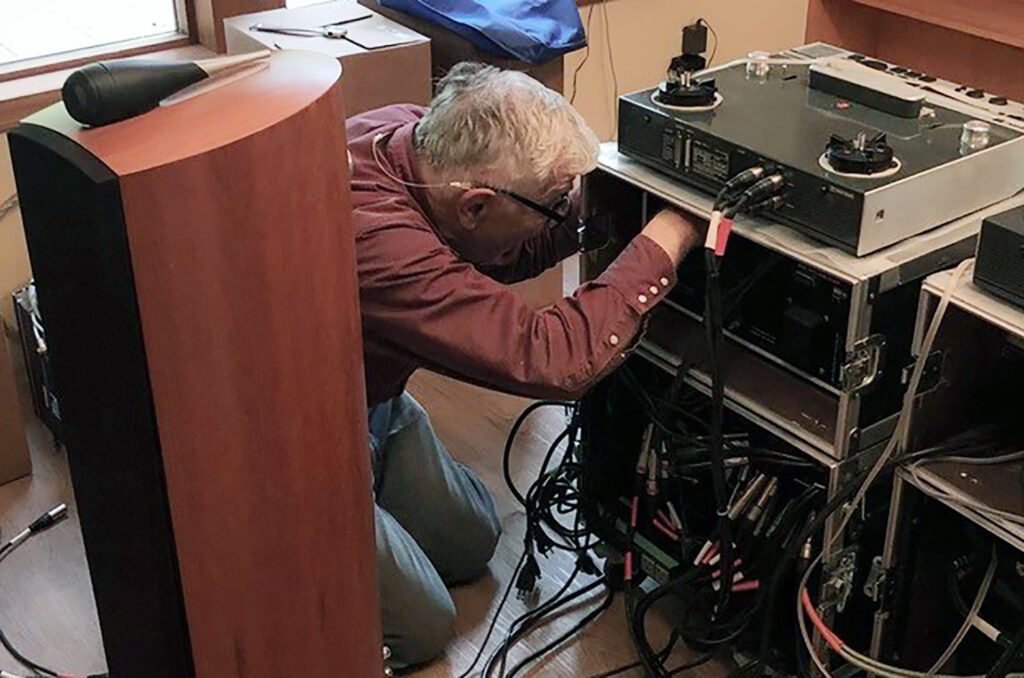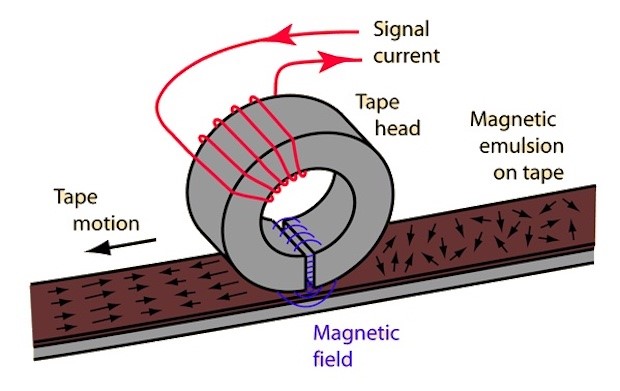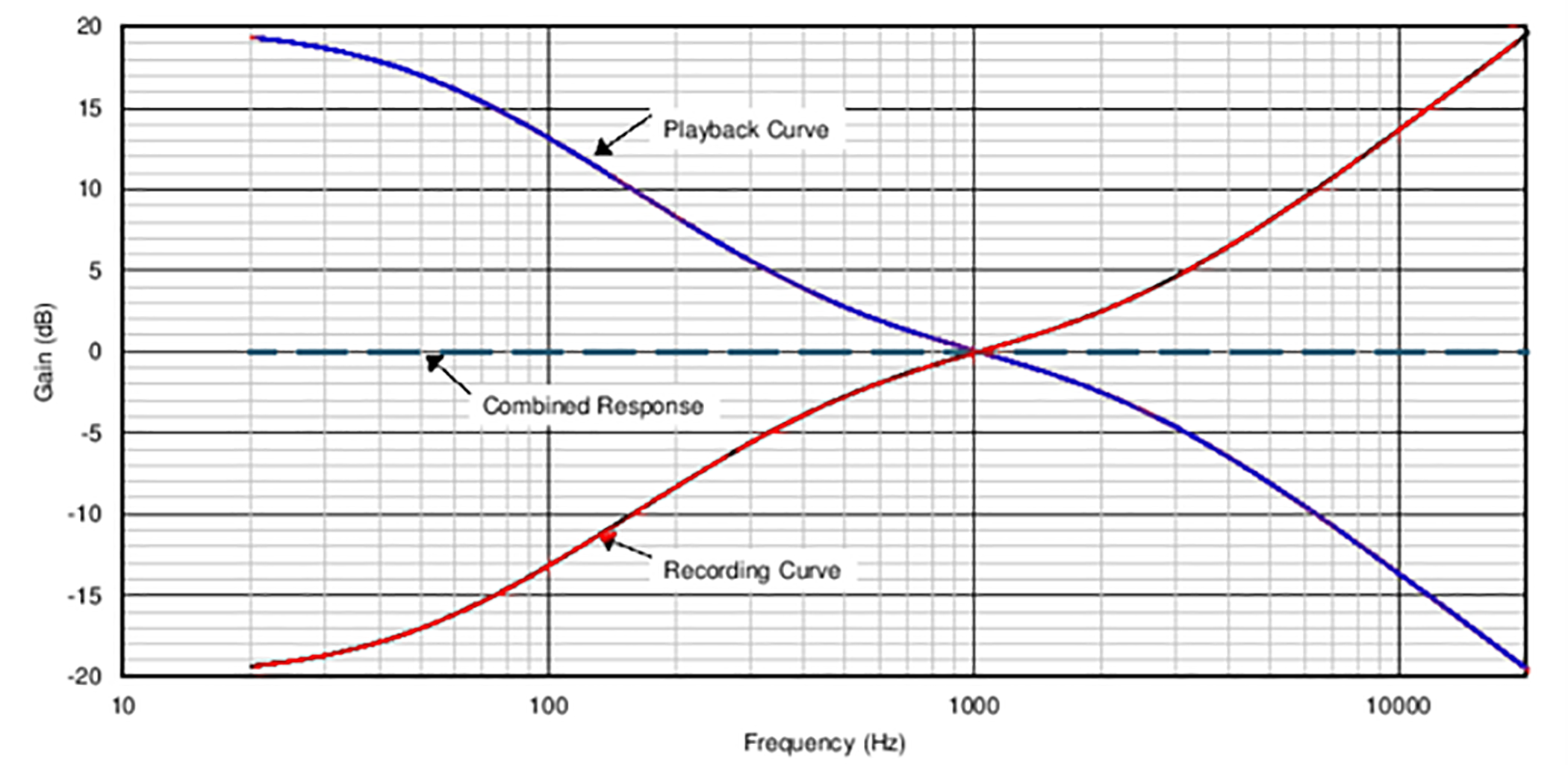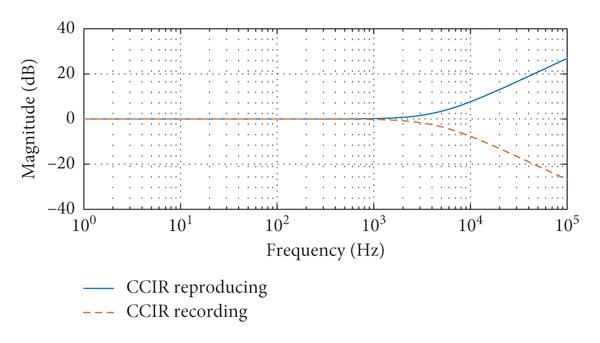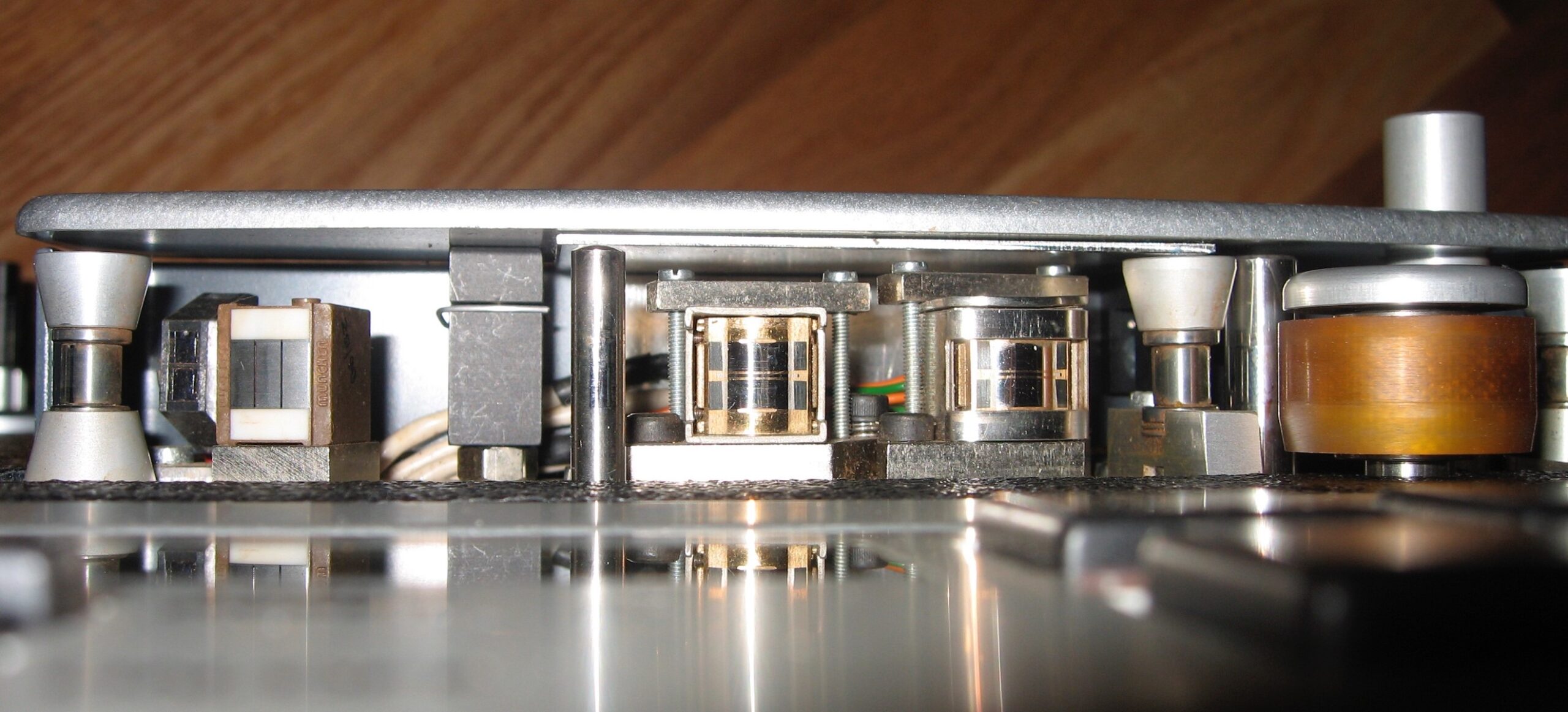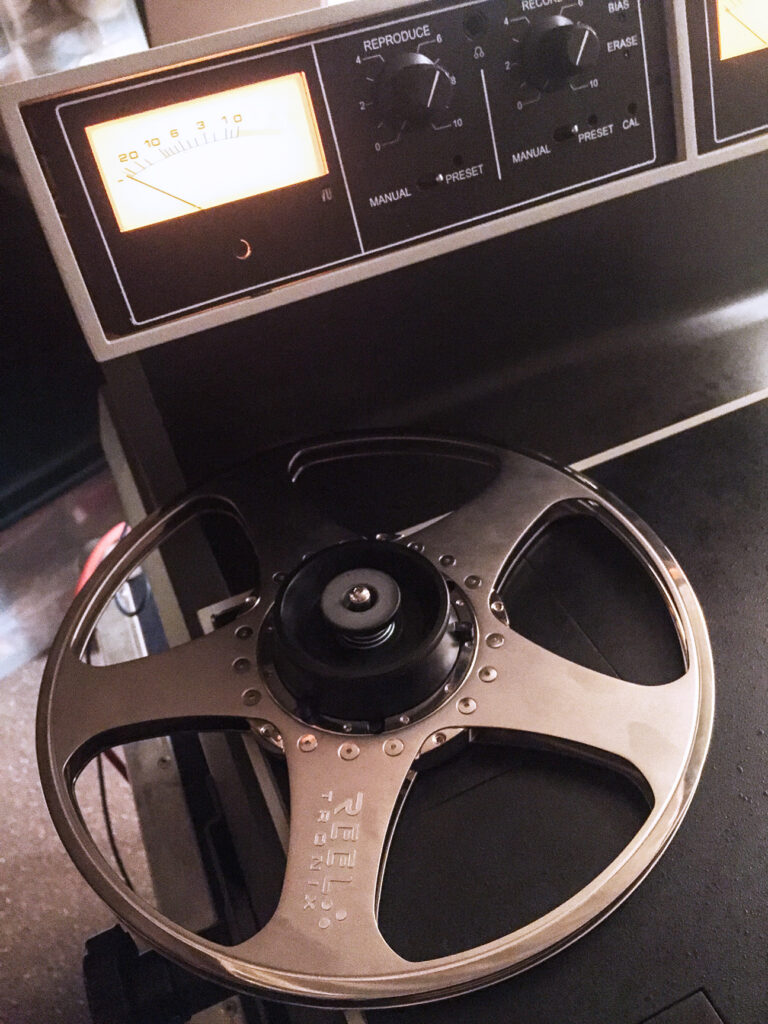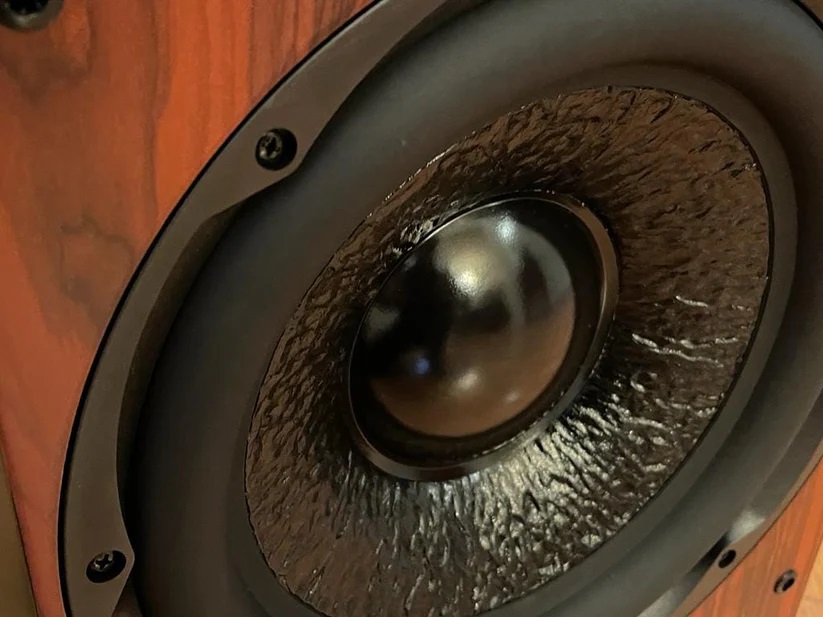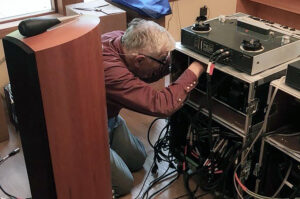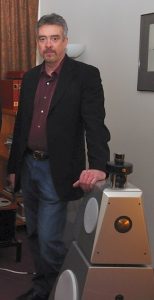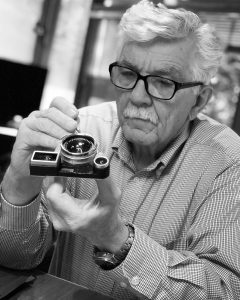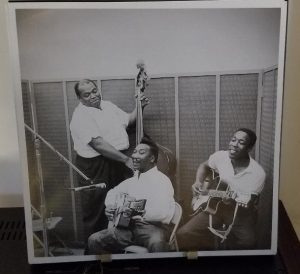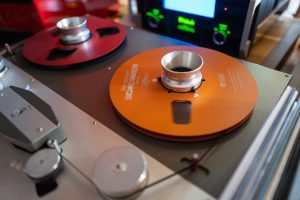Harold Tichenor is a Real-to-Reel (RTR) tape archivist with over 40 years of experience as a professional. His prior article for Positive Feedback was an important summary of RTR provenance and tape generations, which I highly recommend to our readers.
In this article, Harold outlines the history and elementals of RTR tape reproduction. It is well worth reading for all audiophile RTR enthusiasts.
More from Harold is to come.
Dr. David W. Robinson, Editor-in-Chief
Harold Tichenor at work with a RTR machine
In recent years reel to reel audio tape has had a resurgence in popularity among audiophiles. For many newcomers to this audio format, it can be overwhelming to face the specialized nomenclature and variable technicalities that make tape recording a bit more complicated than simply playing a vinyl record, a CD or a streaming file. Understanding the technology itself can make learning how to handle, record and play tapes much easier.
So, first some background.
Sound is the audible cyclical compression and expansion of the medium through which it travels, air in our usual listening experience. The sound pressure level (SPL) or loudness of the sound is described as its volume and can be measured in decibels (dB). Humans have a perceptual range of 120 dB, where the loudest bearable sound is about one trillion times the volume of the least perceptible sound. (Both in acoustics and electronics a decibel is a method of comparing volumes using a logarithmic scale. Each time a sound doubles it is measured as an increase of 3 dB)
The number of cycles of compression and expansion occurring during a second in time defines the sound’s frequency (its tone) and is expressed in Hertz (Hz). Humans can at best perceive tones falling within the range of 16Hz to 20,000 Hz (20kHz); the range perceived by an individual tends to decline with age, most sharply at the high end.
Like the eardrum in our ear canals, a microphone has a diaphragm that will vibrate at the same rate as the tones it receives. And like the nerve impulses generated in our inner ear, the microphone produces electrical pulses (a signal) that represent the same frequencies at proportional volume levels to those of the original sound.
Early in the 20th century, experimental recording techniques were developed such that a coated tape or steel wire could be passed continuously over an electromagnet (a record head) as it received such a signal from a microphone. The tape’s coating preserved a magnetic "image" of the series of pulses in the order in which they were applied. The same tape when passed at the same speed over the same head or a special playback head generated electronic currents analogous to those that were initially recorded. This signal when amplified could be used to drive a speaker and thus realistically reproduce the sounds picked up by the original microphone.
Credit: http://hyperphysics.phy-astr.gsu.edu/hbase/Audio/imgaud/tape6.gif
For the heads to accurately record the varying frequencies, it was found that adding an inaudible very high frequency tone to the record signal would "excite" the magnetic particles in the tape emulsion making them more able to respond to the frequencies within the audible range. This added high frequency tone is called the bias and its level affects both the range of frequency response and the level of the audible signal in relation to the background electromagnetic noise of the medium itself—which can described in decibels as the signal to noise ratio. (S/N)
But no microphone responds the same way as our ears do, and no magnetic tape recorder makes a perfect analog of the signals it receives. To correct these variances, the electronic circuitry of the recorder needs to modify the levels of the incoming frequencies during recording; and then during playback the process needs to be reversed in order to present an accurate recreation at the speakers. This involves pre-emphasis of portions of the audio spectrum and on playback reciprocal de-emphasis to allow the result to approximate the levels of the original varying frequencies that were recorded. This process is called equalization (EQ).
Audiophiles with turntables and phono stages used to playback acetate and LP phonograms will already be familiar with the concept of equalization. The inherent nature of record production involves the need to deemphasize the bass and boost the treble somewhat while cutting the master disc on the lathe. After all the stages of producing records - plating the "mother," preparing the stampers and actually pressing the LPs—when playing them back on a turntable, the "phono stage"—its electronics—needs to impose the correct matching deemphasize curve to reproduce the program as intended. By the 1970s most long-playing record manufacturers had adopted the RIAA (Recording Industry Association of America) standard that had been originally proposed in 1954.
Credit: http://smithsofweston.com/Assets/Images/AMPS/PHONO%20PREAMP/RIAA.jpg
However, with tape recording the equalization process is opposite to that of LP production. Generally, the higher end of the audio spectrum needs to be restrained and on playback increased proportionally.
There have been quite a few tape recording EQ standards, but the one most common in North American studio recording is NAB (National Association of Broadcasters), while elsewhere in the world it has been CCIR (Comité Consultatif International pour la Radio). (The latter is often referred to as "IEC," however this is very imprecise as there are in fact many standards described by the International Electrotechnical Commission including both NAB and CCIR.) There are several other equalization standards in the tape world that the home user will rarely confront: AES (Audio Engineering Society) for 30 IPS tapes, Nagramaster, AME (Ampex Master Equalization), CBS (Columbia Broadcasting System) among others. But most consumer machines only offer either NAB or CCIR, while prosumer and professional tape recorders often offer both with a selection switch.
Since the two systems use different curves of emphasis and deemphasis, a tape made using the NAB standard when played back on a CCIR machine will sound "dull" while a CCIR tape played back on an NAB EQ deck will sound "bright." But these differences are fairly subtle for most listeners and need not seriously impair one’s listening experience.
There are several other equalization standards in the tape world that the home user will rarely confront: AES (Audio Engineering Society) for 30 ips tapes, Nagramaster, AME (Ampex Master Equalization), CBS (Columbia Broadcasting System) among others. But most consumer machines only offer either NAB or CCIR, while prosumer and professional tape recorders often offer both with a selection switch.
One of the advantages of tape recording is the ability to reuse the tape stock numerous times. However, to do this the previous recording must be erased before a new recording can be laid down. Tape can be bulk erased using a heavy electromagnetic. But for the sake of convenience, most tapes recorders have an additional head in the tape path in advance of the record head. This erase head applies an ultrahigh frequency signal that essentially reorders the magnetic particles into a random or neutral pattern eliminating any of the previous recorded programming on the tape.
Some lower cost tape recorders for home use relied on a head that served to both record and playback the recording. However, a record/play head is a compromise since for technical reasons the gap between the magnetic poles of a head is preferably narrower on a play head than on a record head. The size of the playback head’s gap can determine the highest frequency the tape recorder can reproduce. The smaller the gap, the finer the wave form it can replicate, enabling higher frequencies to be replayed. But a very fine gap in a record head is a disadvantage reducing potential record levels. Higher quality consumer tape recorders therefore have at least three separate heads, one to erase, one to record, and one for playback. And for studio production purposes, a professional tape machine can selectively playback the signal of either the record or the playback heads.
A front view of the headstack for a Lyrec PTR1 professional tape recorder built around 1989. Starting at the left there is an adjustable tape guide, a full track erase head, a tape cover mounting block, a tape lifter, a two tack DIN standard record head, a two track DIN standard play head, another adjustable guide, the drive capstan and its pinch roller partially in front of it and just at the edge of the picture yet another adjustable guide. Behind the pinch roller is a button for engaging a pair of editing scissors.
With minor technical adjustments this remained the process by which magnetic tape preserved the original sounds of most commercial and amateur recordings for the next fifty years.




